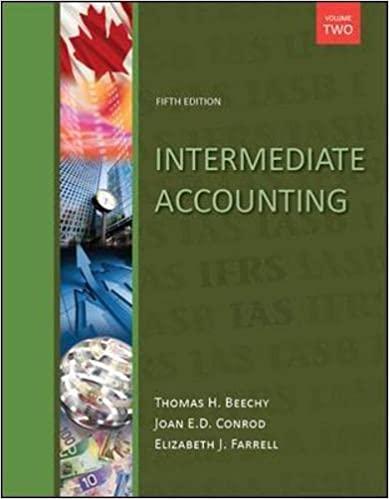Swift Corp. reports the following situations in 20X6 with respect to its high-tech manufacturing equipment: a. Machine
Question:
Swift Corp. reports the following situations in 20X6 with respect to its high-tech manufacturing equipment:
a. Machine 1 was acquired at a cost of $1,106,000 in 20X3. The machine was depreciated on a straight-line basis over its expected seven-year life. At the end of 20X6, management decided that this machine should have been depreciated over a total useful life of 11 years. Salvage value, expected to be negligible, has not changed.
b. Machine 2 was acquired at a cost of $620,000 in 20X5. It was being depreciated on a declining-balance method using a rate of 40%. Salvage values were expected to be minimal. In 20X6, management decided that, based on the usage patterns seen to date, units-of-production would be a more appropriate method of depreciation. The machine is used sporadically and suffers from wear and tear only as used (i.e., obsolescence is not much of a factor in the loss of utility). Estimated units-of-production total 150,000, of which 70,000 units were produced in 20X5 and 25,000 units in 20X6.
c. Machine 3 was acquired in 20X3 at a cost of $423,000. Management discovered in 20X6 that the machine was expensed in 20X3, despite the fact that it had a useful life of 9 years, with a 10% salvage value. Straight-line depreciation should have been used for this asset. For all depreciation methods, the company follows a policy of recording a full year of depreciation charged in the first year, but no depreciation is charged in the year of disposal.
Required:
1. Classify each of the changes described above, and identify the correct accounting treatment.
2. For each machine, calculate 20X6 depreciation.
3. If a retrospective adjustment is needed, calculate the retrospective adjustment in 20X6. The tax rate is 36%.
Step by Step Answer:






